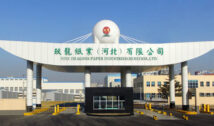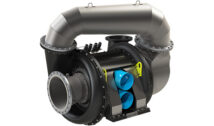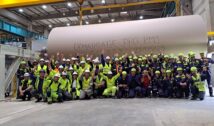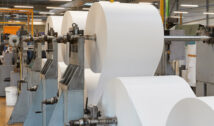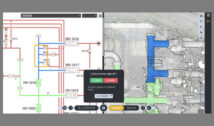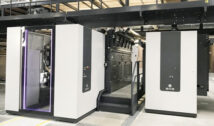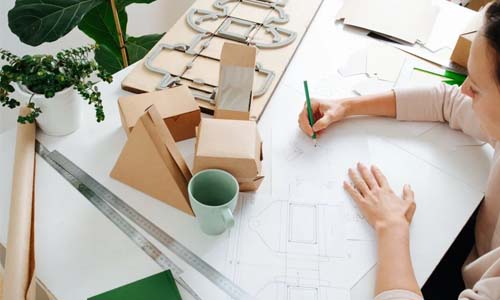
Treating packaging as an afterthought can lead to supply chain inefficiencies. Learn the benefits of developing retail packaging and transport packaging in tandem with the product.
When you look at the product development lifecycle, packaging is typically found towards the end. It is often viewed as a last-minute task that needs to be completed before getting the product to market—something that simply needs to be checked off a list, instead of an integral part of the development process.
Treating packaging as an afterthought can lead to inefficient space utilisation and high rates of product damage. If you want to avoid these issues, it’s best to develop your retail packaging and transport packaging at the same time as the product.
To learn more about the packaging development process, we talked with Matthew White, International Sales Executive for BillerudKorsnäs Managed Packaging. White has spent his 20-year career partnering with global brands to develop and execute packaging solutions that drive millions in annualized supply chain savings. As a father of two young children and a huge animal lover, his passion for the industry was fueled by the chance to use packaging to deliver on major sustainability initiatives.
How Is Packaging Usually Developed?
According to White, there are several ways that brands may go about developing their packaging solutions:
- Original equipment manufacturers (OEMs) develop both retail packaging and transport packaging structure and design. In this case, brands are simply applying their own graphics to packaging that was designed elsewhere.
- Brands design retail packaging structure themselves, but leave transport packaging to the OEMs. This can lead to situations in which the transport packaging is not optimised for the brand’s specific product.
- Brands develop their own retail packaging and transport packaging. Taking control of both your retail and transport packaging can improve efficiency and performance, but it’s important to ensure that there is no disconnect between your teams.
Read our full discussion below for more information on how brands can take steps to make their packaging development process more efficient.
The Importance of Developing Retail Packaging and Transport Packaging Together
The disconnect between retail packaging and transport packaging
Q: In your experience, do brands usually design transport packaging together with retail packaging? If the two are designed separately, why might this be?
White: Oftentimes, brands do not begin to think about their transport packaging until the retail packaging is already in production.
Retail packaging tends to have a closer eye on it for any company. Brands might develop retail packaging internally, but then leave transport packaging to their OEMs. In these situations, the individuals making decisions about transport packaging are not fully in tune with the brand and its supply chain.
Having OEMs design transport packaging can be risky, as OEMs don’t experience repercussions for inefficient packaging. The OEM’s job is to make sure the product is ready to leave the factory—they are not necessarily incentivised to create transport packaging that is customised for sustainability or cost-savings.
Why brands should elevate their transport packaging
Q: How would you describe the benefits of optimising transport packaging?
White: Since retail packaging is what customers will be seeing in-store, it makes sense why some brands might be more concerned with retail packaging than transport packaging—but transport packaging is still crucial, because it plays a significant role in supply chain efficiency.
Even if your retail packaging has been carefully designed to fit your product, chances are there will be inefficiencies in how it is being packed within transport cartons if you haven’t taken the time to audit your transport packaging.
Q: What happens when transport packaging is not optimised?
White: There’s several challenges that come up when brands don’t put enough thought into their transport packaging. If your transport packaging is not effective, you can experience retail packaging damage. It could be multiple products in your transport packaging, or just individual products. Either way, damaged packages usually need to be repacked once they reach the distribution center.
Beyond the damage to the retail packaging, you can be shipping extra space. You may not be moving your product in the most efficient way. In today’s world, where container rates are skyrocketing and container availability is limited, if you’re not maximizing the amount of product in your container, then you could have delays in sending the product to retail.
Of course, there is also a sustainability loss anytime you experience product damage or shipment inefficiency.
Develop packaging in tandem with the product
Q: Do you have any tips for how to develop retail packaging and transport packaging as a system?
White: It’s important to start thinking about packaging while the product itself is being developed. Ideally, your packaging should be developed as early in the process as possible. This way, if you find that a small change to the product dimensions would allow for a more streamlined packaging design, you can make these changes without disrupting production.
For example, we worked with a brand once who had optimised the dimensions of their product for efficient container utilisation, but forgot to account for packaging. So ultimately, when it came time to add packaging into the mix, they couldn’t achieve the container yield they were originally hoping for. If they had started thinking about packaging earlier on, they could have made minor adjustments to the product that would have made a huge difference for packaging.
Some brands have specific visions in mind for their retail packaging, and that’s fine. But when you develop your retail packaging, you need to keep in mind how your design is going to interact with the transport packaging, and how the product is going to move through the supply chain.
Q: How can brands eliminate silos between different packaging development teams?
White: The team that is working on your retail packaging may be separate from the team working on your transport packaging. After all, these types of packaging require different considerations. That said, it’s crucial that these teams are collaborating with each other and considering how the retail packaging may end up fitting into the transport packaging.
As a brand owner, it’s important to make sure there is an open line of communication between the packaging designers and the product development team.







